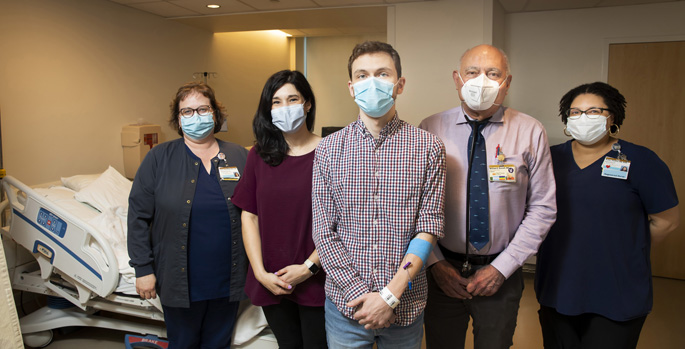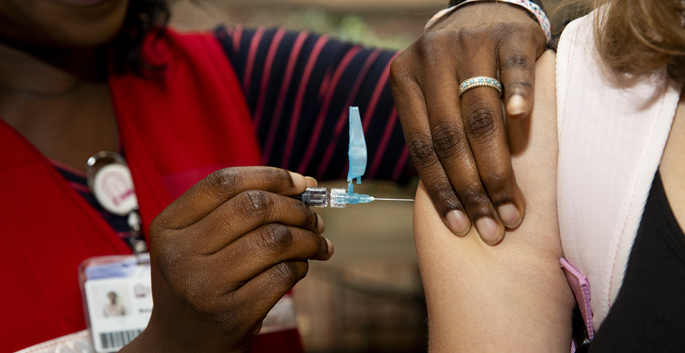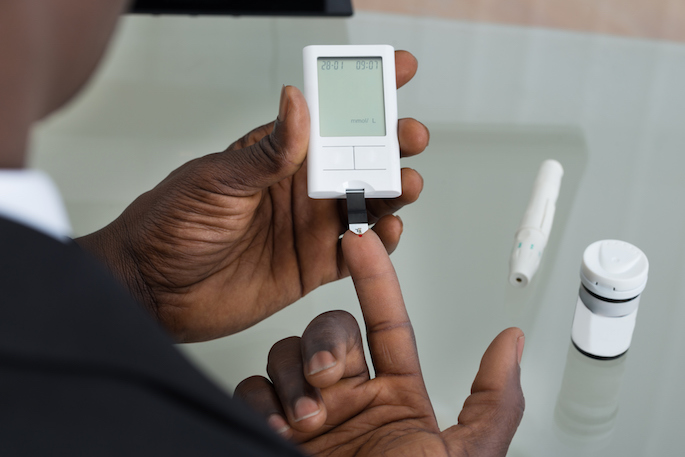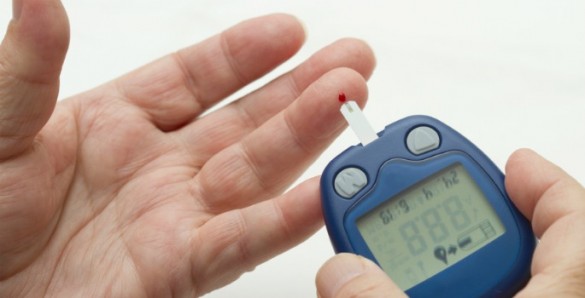
by Jill Clendening
Adam Brooks was 22 when he was diagnosed with Type 1 diabetes.
At that time, the Cleveland, Tennessee, resident had begun urinating frequently, about every 15 minutes. When this continued for days, Brooks bought an at-home blood glucose test kit which showed a reading of 250 mg/dL. A fasting blood sugar level of 126 mg/dL or higher indicates diabetes, according to the American Diabetes Association (ADA).
Brooks went immediately to the hospital and soon had a diagnosis. He is an engineer and has a logical approach to life, so he began educating himself about how to best manage Type 1 diabetes (T1D). But for Brooks, that wasn’t enough.
He decided he wanted to participate in a T1D clinical research trial. He searched clinicaltrials.gov, a public database of clinical studies hosted by the National Institutes of Health and found a study that seemed to fit at Vanderbilt University Medical Center, about three hours’ drive from his home.
“Researchers obviously need people to participate and to be a part of these types of clinical trials to help advance research and develop new medications and treatments,” Brooks said. “I just wanted to be a part of that. I thought it would help progress the science toward some sort of preventive treatment for people who don’t have fully established Type 1 diabetes, even if it doesn’t result in a reversal-type cure for people who have established Type 1 diabetes.”
As part of the TrialNet consortium, VUMC is one of 16 North American sites conducting the Tolerance Using Plasmid in People with Type 1 Diabetes (TOPPLE) study, a phase 1 investigation that tests the safety and dosing of a new plasmid therapy. A plasmid is a bit of DNA which can be used as a delivery system to carry a treatment directly into targeted cells.
In the TOPPLE study, a plasmid therapy developed by the pharmaceutical company Novo Nordisk delivers a protein called an antigen and three additional therapies with the goal of communicating with and retraining the immune system. The plasmid is similar to that found in the Pfizer and Moderna coronavirus vaccines in that the material is injected and then undergoes a brief expression to produce the proteins in the vicinity of the immune system.
These are proteins that have demonstrated in earlier mouse-based studies the ability to modify the immune response and dampen the immune damage of the insulin-producing pancreatic beta cells. If successful in human trials, this plasmid delivery method would avoid intravenous infusions of these proteins that unnecessarily expose multiple tissues in the body that aren’t the intended target cells.
“We’re doing this under the auspices of TrialNet, a group of academic diabetes centers with strong clinical research facilities who work together on the goal of developing ways to prevent someone from getting Type 1 diabetes and to find ways to preserve insulin secretion in those who have Type 1 diabetes,” said William Russell, MD, TrialNet principal investigator and director of the Division of Pediatric Endocrinology and Diabetes at VUMC.
“In TrialNet, we don’t develop drugs, but we often use drugs in our studies that are already on the market and FDA approved for other autoimmune conditions like rheumatoid arthritis, lupus or scleroderma. We look to see if there might be a benefit in repurposing them to affect the immune system in people with Type 1 diabetes. Whether you get Type 1 diabetes or you get Hashimoto’s hypothyroidism or another autoimmune disease, the disease process is very, very similar. The target organs just tend to be different. In this study, we are studying a drug specifically designed for Type 1 diabetes.”
The TOPPLE study is open to adults 18 to 45 years old who are within four years of their Type 1 diabetes diagnosis. A total of 48 participants are grouped into four cohorts of 12. In each cohort, nine participants receive the plasmid and three receive a placebo. Each cohort receives a larger dose of plasmid than the previous cohort. There is a pause between each cohort to analyze the resulting safety data, and each cohort is followed for a year.
“What we’re doing here is determining if this is safe and looking at longitudinal data to see if there is some mechanistic signal that tells us it’s doing what we think it is, which is basically to re-educate their lymphocytes to not attack their insulin-producing cells.”
Brooks, who is now 25, reached out to let the VUMC investigators know he wanted take part in the study. As he was being screened for eligibility, he had another major life event — his wife, Maegan, gave birth to their first child, Katherine.
“When I contacted him, his baby girl had just been born,” said Brenna Hammel, RN, CPN, a VUMC research nurse who works with study participants. “He said, ‘I want to be a part of this so much. Let me make sure my wife’s OK with it.’ Then, he said, ‘We’re gonna do it!’ All three members of the Brooks family have attended every visit.”
Brooks became the first participant in the VUMC-based trial and was only the 23rd person in the United States to receive the plasmid. After being successfully screened, he had an initial overnight stay at VUMC’s Clinical Research Center during which he received his first of 12 doses of plasmid or placebo, and he returned for briefer outpatient visits for the remaining doses. During his visits he also had blood drawn so the investigators could gauge his cells’ immune response and to ensure his body was not responding adversely to the treatment.
One other participant has entered the study at VUMC, and two others are in the process of screening as the trial is now in the third and fourth cohorts.
As for Brooks, he said taking part in the trial was easy, and he is encouraging others to take part in clinical research.
“Participation in clinical trials is a good thing to do,” he said. “I would say it’s safe, because they do have to go through a lot of measures to even make it to the point of beginning a human trial. And it’s not some big commitment. You can go once, and if you realize it’s not something you want to do, you can stop. The benefits are pretty good because you might see a result yourself or you’ll help other people.”
To learn more about the TOPPLE study, email Brenna Hammel, RN, CPN, CCRP, at Brenna.hammel@vumc.org.















